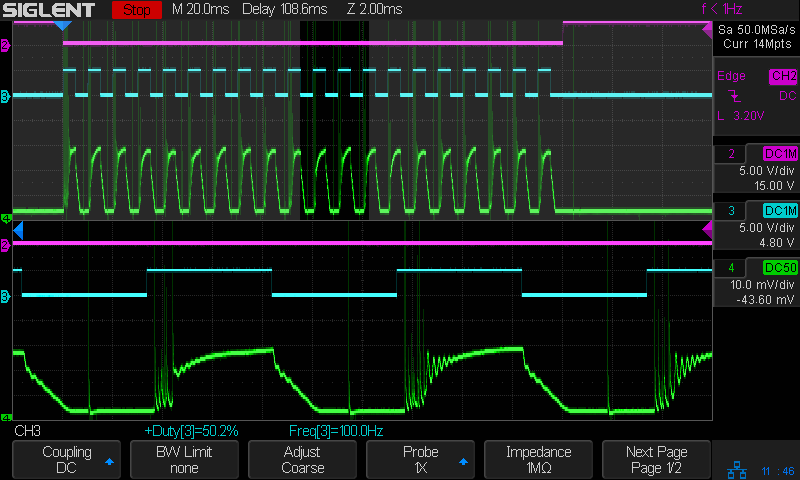While I wasn’t specifically looking for it, feeding a pure analog signal into the power supply does not eliminate the random glitches:
L(-Enable) - magentaIN(PWM / analog) - cyan- tube current 10 mA/div - green
The spikes in the green trace across the bottom happened when the analog input should produce zero current. The L input is active, but the output current should not glitch in either case.
Background and more details on where that trace came from:
No, which is not surprising, because the power supply filters the PWM down to its equivalent analog value, so putting a trimpot on what should be the analog input isn’t any different than feeding it a PWM signal, with the caveat the PWM carrier must be far above the filter cutoff.
